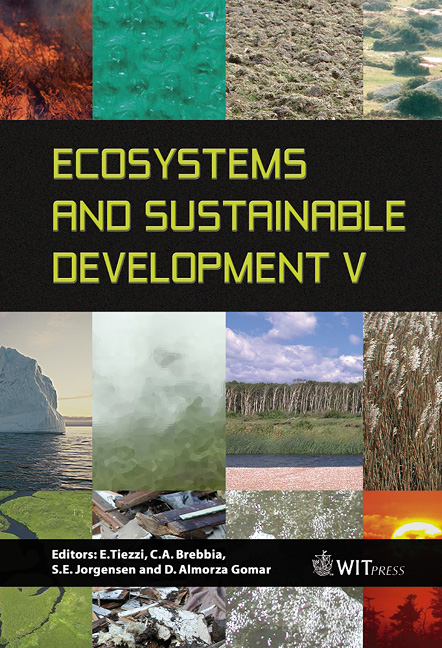Amazon River Basin: I – Characterization And Environmental Impacts Due To Deforestation
Price
Free (open access)
Transaction
Volume
81
Pages
11
Published
2005
Size
1,194 kb
Paper DOI
10.2495/ECO050611
Copyright
WIT Press
Author(s)
R. Barthem, M. Marques, P. Charvet-Almeida & L. F. A. Montag
Abstract
The Amazon River basin is the largest basin of the planet and contributes about 15% of the total freshwater discharge in the world. Among the environmental concerns, habitat modification is considered the most relevant, since the integrity of the aquatic ecosystems and associated coastal/marine ecosystems are strongly dependent on the preservation of the terrestrial ecosystems. In the Amazon basin, deforestation has changed patterns during recent years; besides the \“deforestation arc” embracing the south-eastern and eastern borders of the basin, new projects are now dissecting the heart of the basin. At the present deforestation rate, the main biomes - Amazon Rainforest and Cerrado - are expected to disappear in less than 100 years, leading to regional climate changes. Effective policies to preserve the integrity of terrestrial and aquatic ecosystems must focus on the root causes for the ongoing land conversion process. Keywords: Amazon River basin, hydrological aspects, environmental impacts. 1 Introduction The Amazon River basin, with a total area of 6,869,000 km 2 (table 1) is the largest basin of the planet and a major heat source in the general atmospheric circulation system [1]. It is totally situated in the tropics, between 5 o N and 17 o S and occupies more than one-third of the South America continent. Seven countries (Brazil, Bolivia, Peru, Colombia, Ecuador, Venezuela and Guyana) share the basin. The main headwaters are located in the Andes Cordillera, in Bolivian, Peruvian, Ecuadorian and Colombian territories. Headwaters of important tributaries are located in the Guyana and Brazilian Shields, an ancient
Keywords
Amazon River basin, hydrological aspects, environmental impacts.





